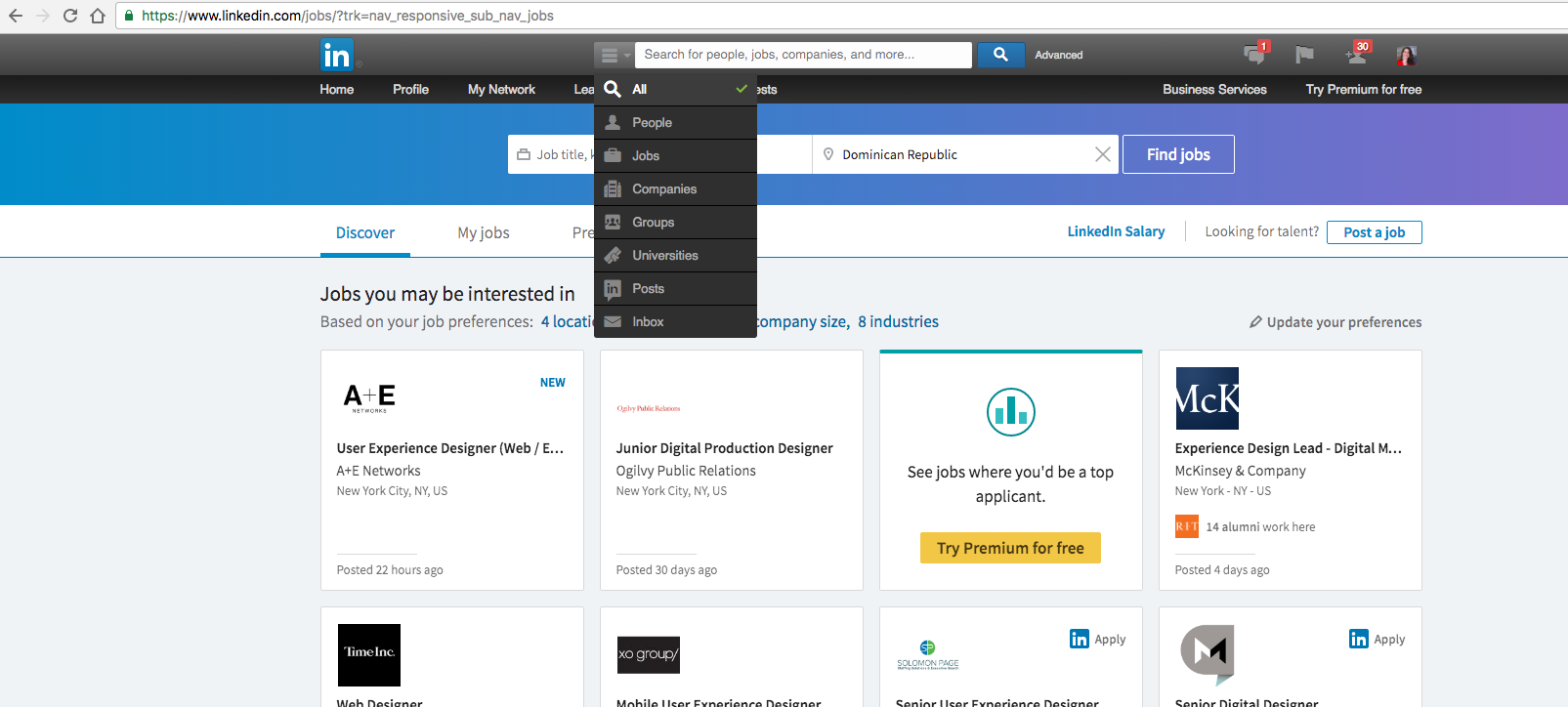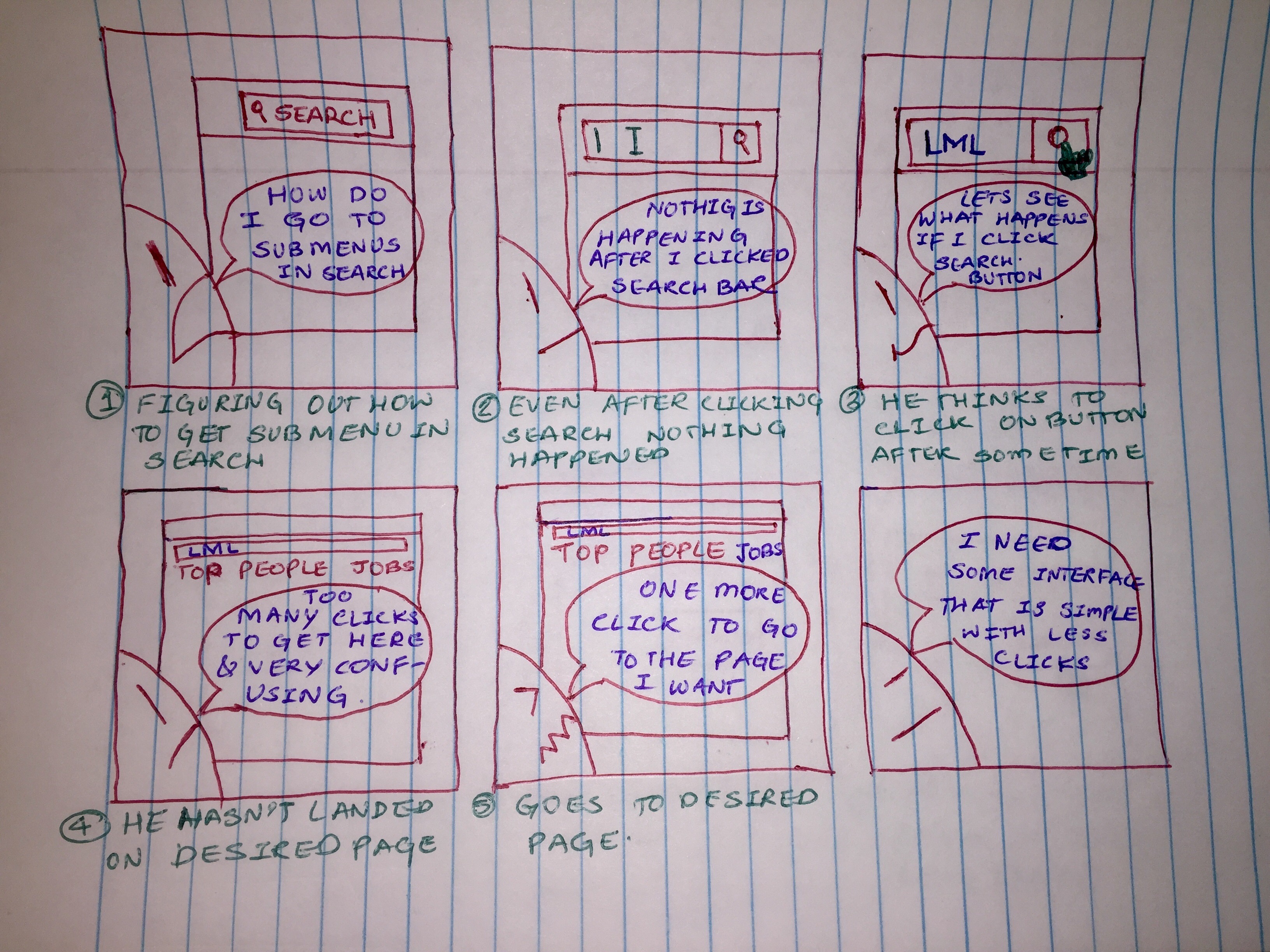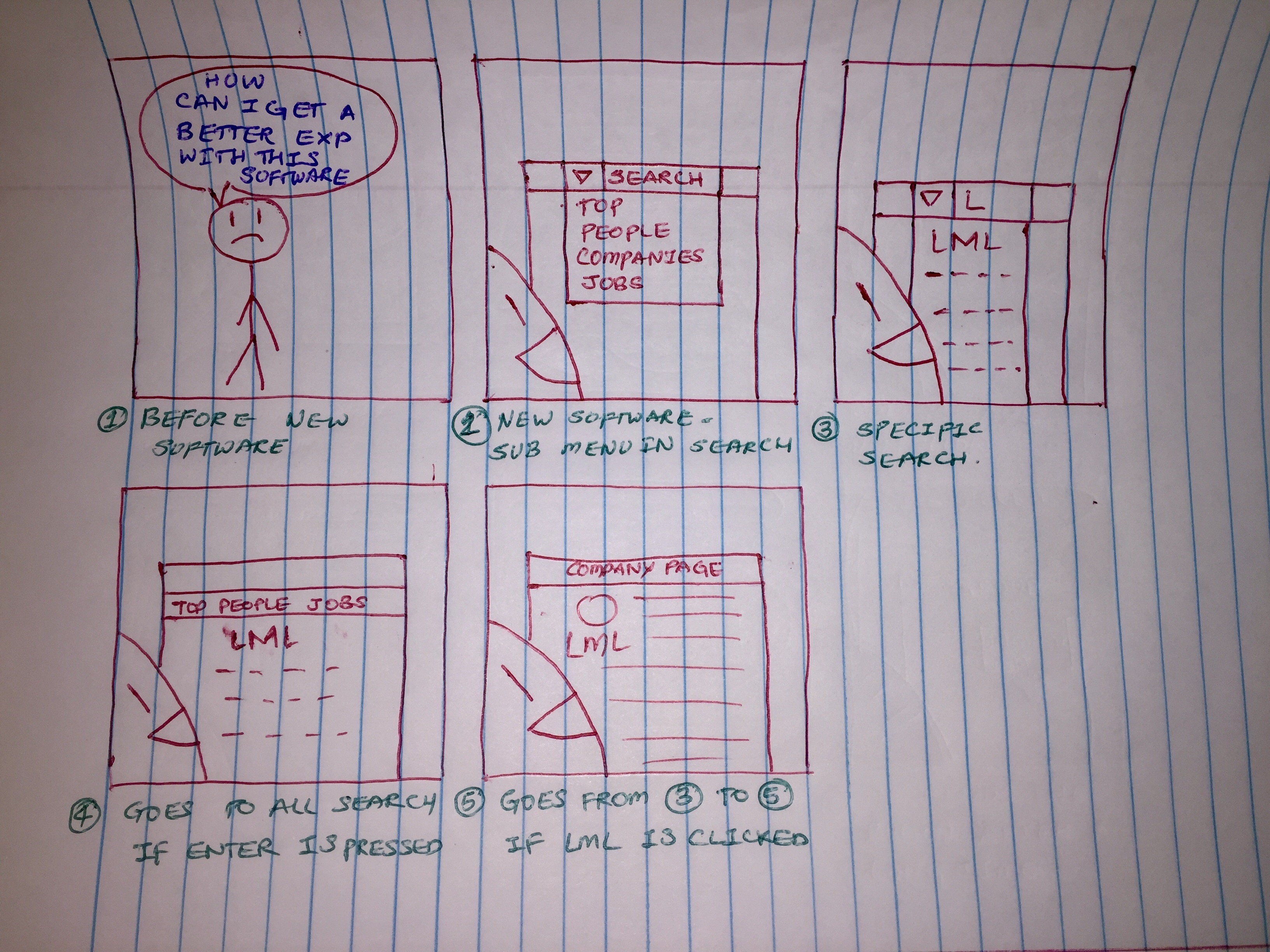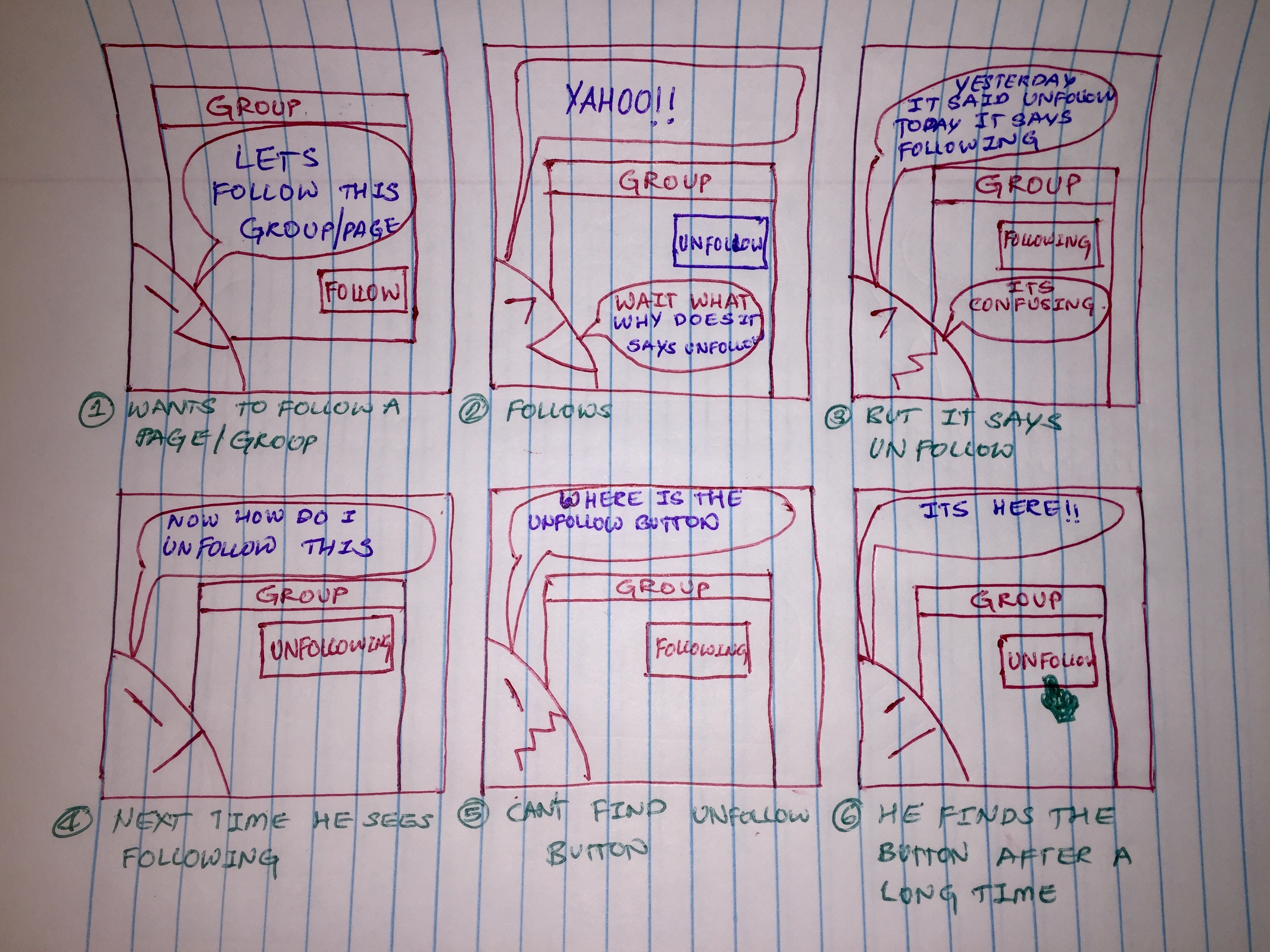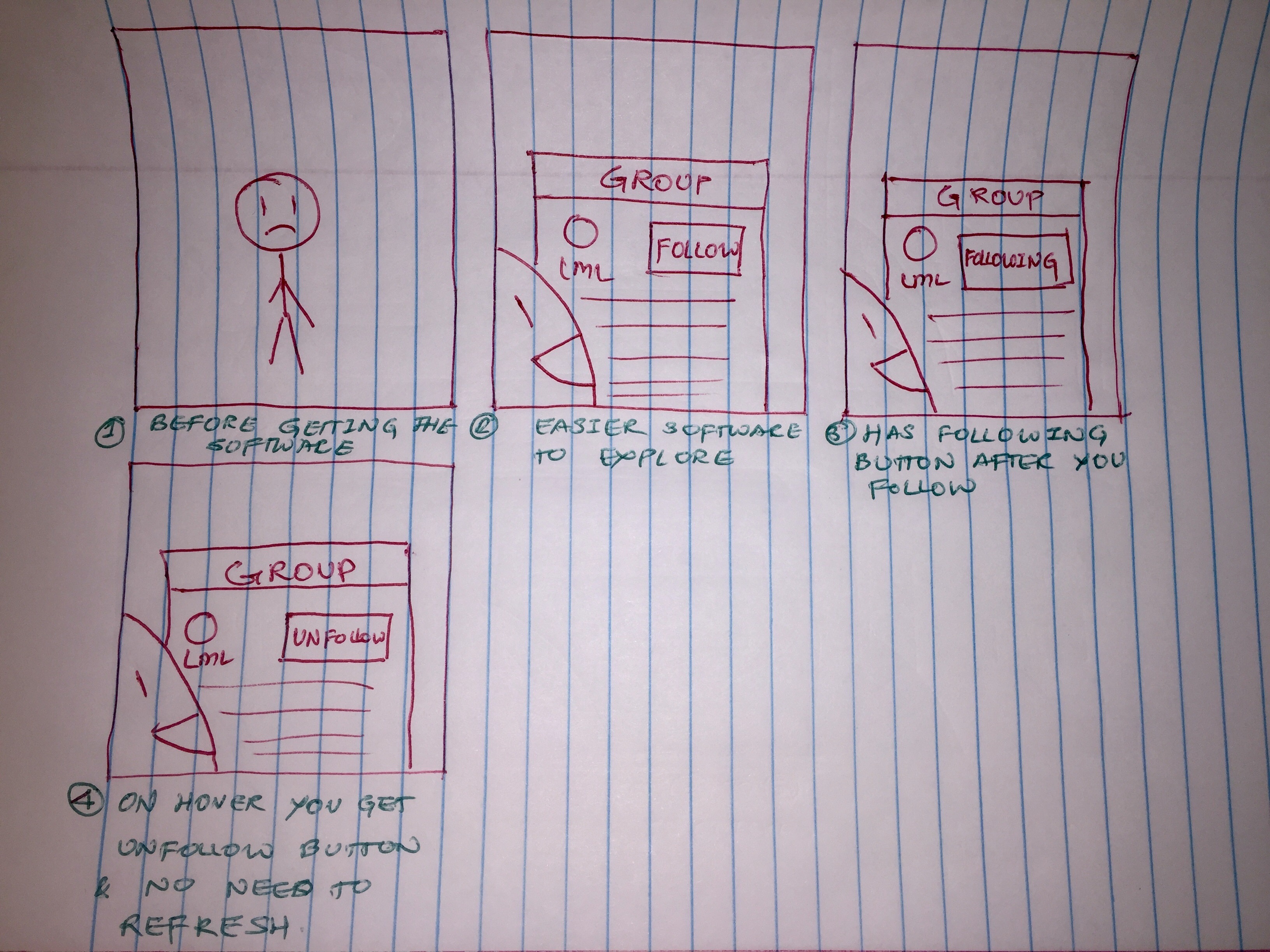LinkedIn UI re-Design
To redesign the new LinkedIn UI on the basis of UX research
In February 2017, LinkedIn launched a new UI that heavily emphasized design, potentially neglecting some critical aspects. We propose a design plan to identify these drawbacks and strive for a more balanced and effective design.
- Tools Used: Illustrator | LucidCharts | Affinity Designer

You all may have experienced the new user interface which LinkedIn has rolled out a few days ago. We have also observed that the new UI is not available for all users; there are still a few who have the previous UI. So we wanted to seize this opportunity, this short transition time, to collect user data and come up with a new design that incorporates the best elements of both versions. Moreover, we aim to introduce features that are missing in both UIs. The basic idea behind this study is to evaluate the updated design with users and provide design suggestions for the platform. The task scenarios given to the users are based on the most common tasks performed by users (in this case, students) on LinkedIn. The study aims to provide the necessary set of design changes that can further enhance the website's usability.

Following are the notes taken from the user interviews Uses Old UI 1. Irritated with new popups 2. Auto scroll of page after closing popup window 3. Thinks hiding endorsement = removing endorsement 4. Sees new UI for the first time 5. Wished to have photos of people who endorsed her 6. Endorsement section from old UI was better 7. Less options are visible 8. Search is confusing 9. Does not understand the meaning of follow button 10. Not sure how to unfollow company 11. Cannot differentiate between headings and buttons 12. Difficulty in adding new section
It depicts people's responsibilities and the communication and coordination required to accomplish a job.
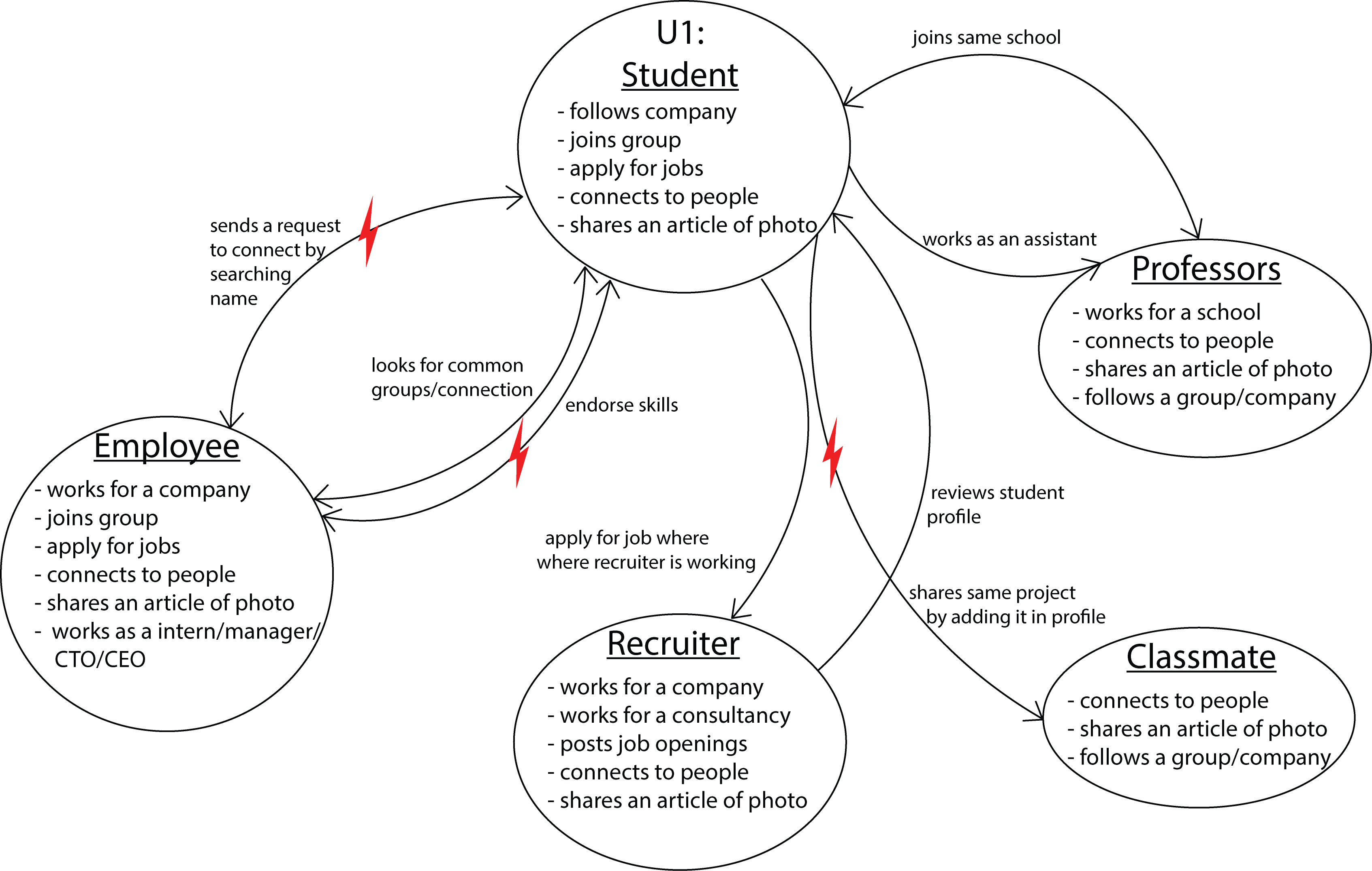
A step-by-step recording of the tasks observed or retrospective accounts recorded during the Contextual Interviews.
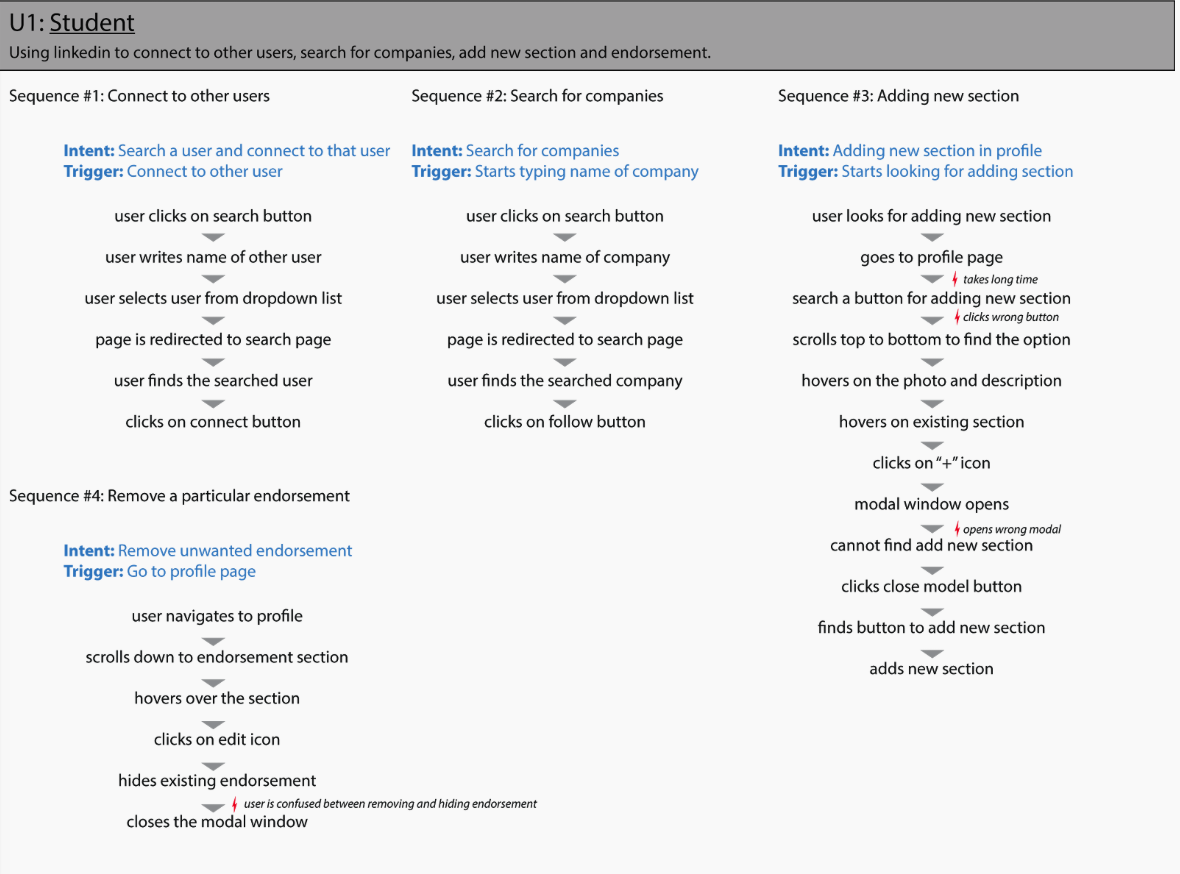
It reveals influences on a person, whether external to the company or internal company policies..
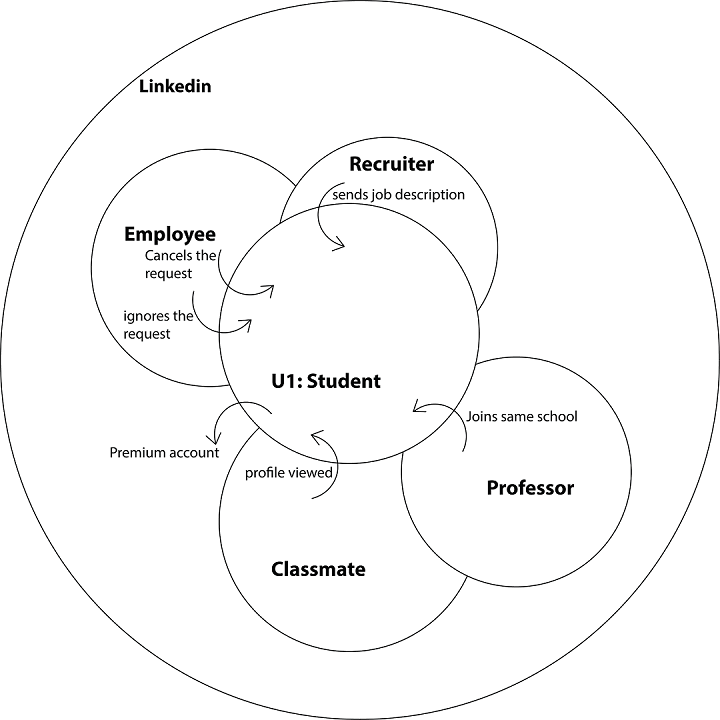
They are the copies or representations of physical or electronic things that the user creates, passes, or references to accomplish a task.
After interviewing and observing a number of participants, the team was able to narrow down its focus on design principles for the LinkedIn experience with the help of an affinity diagram.
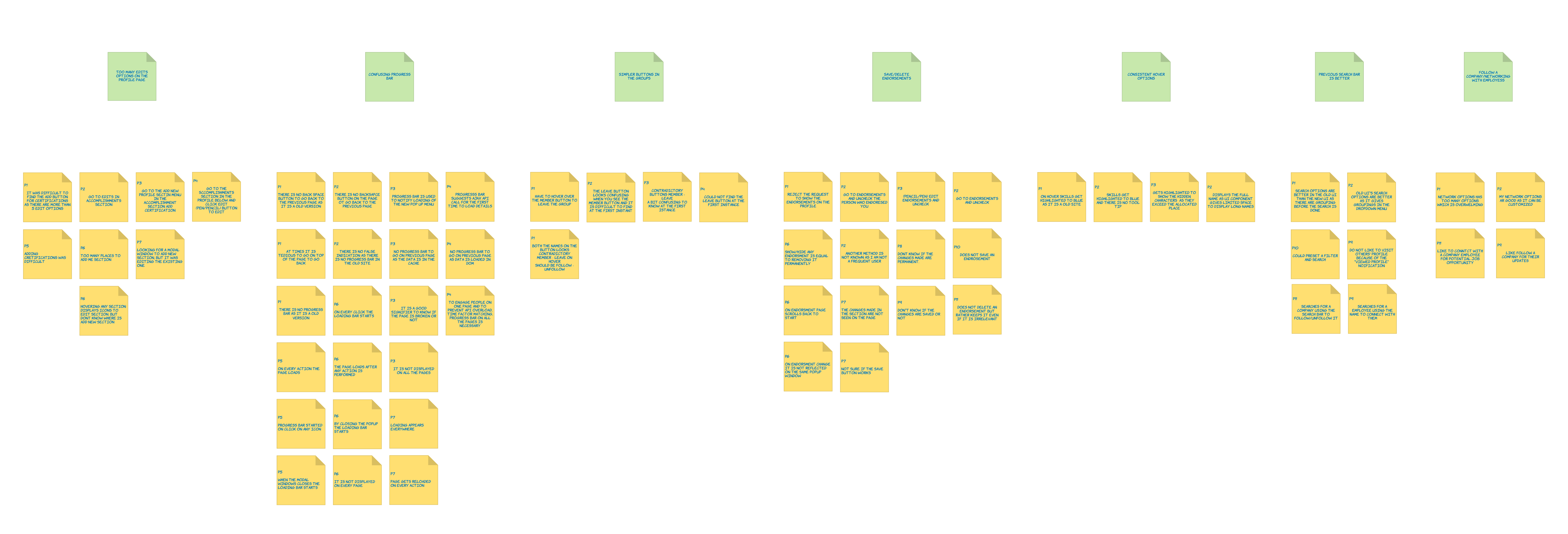
Looking at the top level (green) post-it notes on the diagram above, and working from left to right: Too many edit options on the profile page Saving/deleting endorsements Previous search option is better Confusing button labels
Visioning is very similar to traditional task analysis. It delineates each step, identifies triggers for the steps, outlines various strategies for achieving each intent, and pinpoints breakdowns in ongoing work. Additionally, it may benefit from vocabulary, grammar, and spelling check.

Problem 1 A user wishes to search for a company called LML. He types the name of the company in the search bar and clicks on the search button. The user is taken to the search results page which shows the top results instead of showing the list of companies. Solution 1 A user searches for a company named LML by typing its name in the search bar and adding a filter of “company” before clicking on the search button. After the search button is clicked, it takes the user to the search results page with the list of companies.
Problem 2 The user wishes to follow a group. He finds the group’s page and clicks on the follow button. The button state changes from “Follow” to “Unfollow”. He then later visits the page again and notices that the button state is “Following” and when he hovers over it, it changes to “Unfollow”. Solution 2 He finds the group’s page and clicks on the follow button. The button state changes from “Follow” to “Following” and the user knows that he is following the group. When the user hovers over the button, its state changes to “Unfollow”. At this time the user knows that when he clicks on it, he would unfollow the company.




